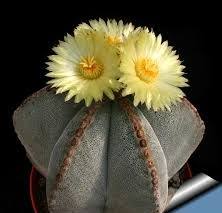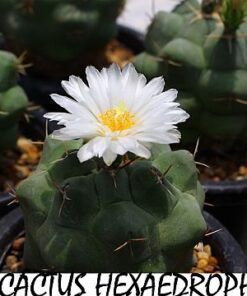Ariocarpus lloydii seeds pack of 5 seeds
₹149.00
Out of stock
Email when stock available
Ariocarpus lloydii Origin and Habitat: It grows in central Mexico and ranges from southern Coahuila and adjacent Zacatecas to eastern Durango (Nazas, Peñon Blanco).
Habitat: These plants are characteristic of dry limestone ridges and low, rocky hills of limestone chips at an altitude of 500-1500 m among the Chihuahuan desert scrub.
Ecology: The stems are normally flush and well camouflaged with the soil surface resembling limestone chips in shape, colour, and texture, rendering the plants extremely cryptic. They are greyish-green in colour, sometimes taking on a yellowish tint with age. These cacti are difficult to spot in their natural habitat. When they are found, it is usually due to their pinkish flowers.
In times of severe drought, the whole above-ground portion of these plants can shrink and be covered by rock fragments, but the taproot remains alive. Many exist as only small, isolated populations, and are in danger of extinction because they sought by plant collectors. For this reason they are protected plants in the regions where they occur.
Cultivation and Propagation: It is not too difficult in a greenhouse, although it grows extremely slowly. The plants need deep pots to accommodate the napiform unit formed by the stem base and the rootstock (or they will often simply crack your pots), and a loose mineral soil with a well-drained substrate. They need a good amount of light, a place near the roof of the greenhouse helps drying the pot after watering. This can be done weekly during the summertime, if the weather is sunny enough, with a little fertilizer added. Kept this way, plants will show a healthy, although slow growth. They are frost hardy to -10°C.
. Additionally grow them under drier conditions or with stronger sunlight. Plants are often grafted to accelerate growth, as they would generally take at least a decade to reach maturity on their own. But the grafted plants are typically rather tall- growing, compared with plants on their own roots, that are usually flatter to the ground. Ariocarpus fissuratus var. lloydii starts blooming at the age of 8-12 years.
Be the first to review “Ariocarpus lloydii seeds pack of 5 seeds” Cancel reply
You must be logged in to post a review.
Related products
cactus and succulent seeds
cactus and succulent seeds
cactus and succulent seeds
cactus and succulent seeds
cactus and succulent seeds
Thelocactus Hexaedrophorus Seeds rare Cactus Seeds Pack of 20 seeds
cactus and succulent seeds
cactus and succulent seeds
Astrophytum Asteria Superkabuto Seeds rare Cactus Seeds Pack of 10 seeds












Reviews
There are no reviews yet.